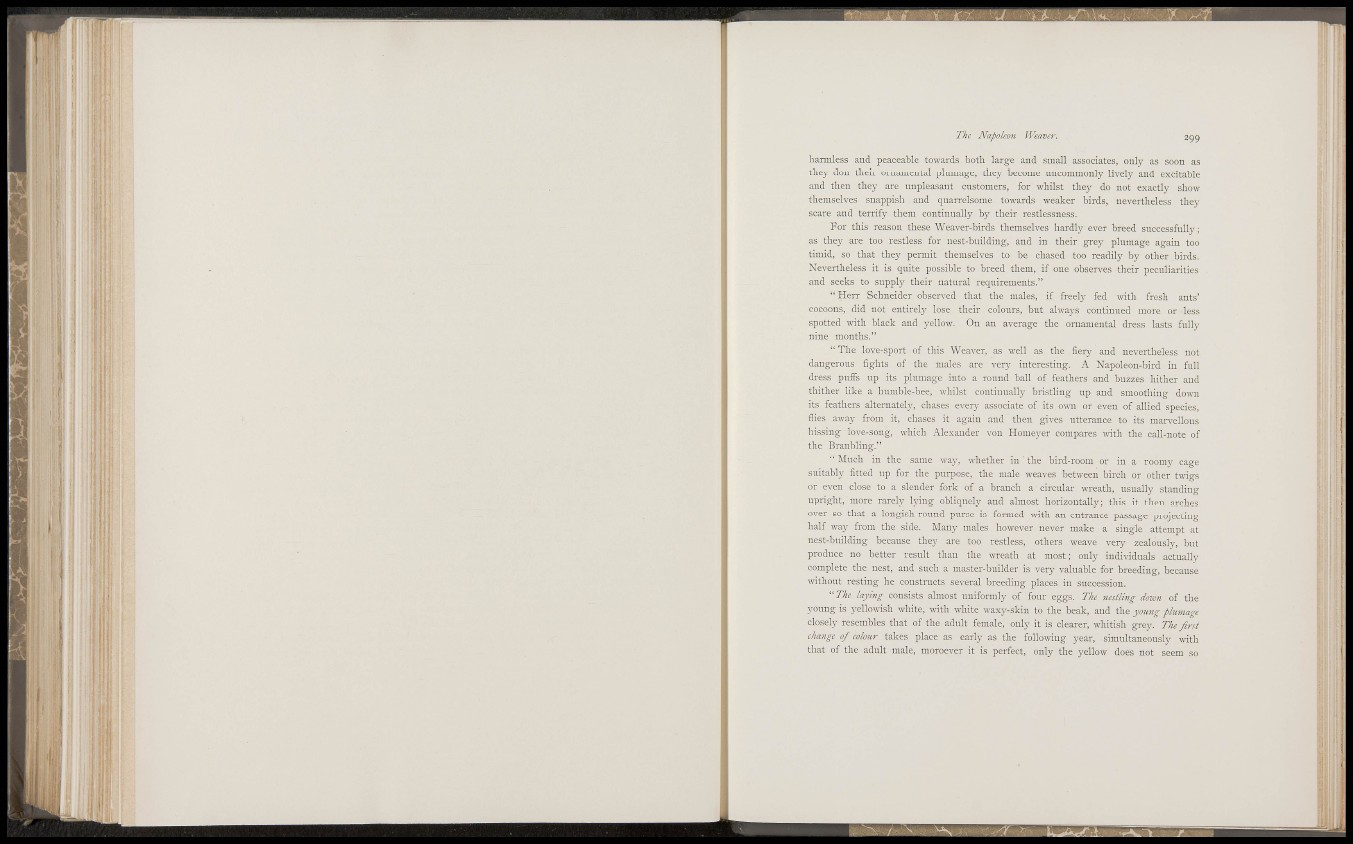
1
i
—i
U i
The Napoleon Weavei'. 2 9 9
hannless and peaceable towards botli large and small associates, only as soon as
tliey don tlieir ornamental plnmage, tliey become nncommonly lively and excitable
and then tliey are unpleasant customers, for whilst they do not exactly show
themselves snappish and quarrelsome towards weaker birds, nevertheless they
scare and terrify them continually by tlieir restlessness.
For this reason these Weaver-birds themselves hardly ever breed successfully;
as they are too restless for nest-building, and in their grey plumage again too
timid, so that they permit themselves to be chased too readily by other birds.
Nevertheless it is quite possible to breed them, if one observes their peculiarities
and seeks to supply their natural requirements."
" H e r r Schneider observed that the males, if freely fed with fresh ants'
cocoons, did not entirely lose their colours, but always continued more or less
spotted with black and yellow. On an average the ornamental dress lasts fully
nine months."
" T h e love-sport of this Weaver, as well as the fiery and nevertheless not
dangerous fights of the males are very interesting. A Napoleon-bird in full
dress puffs up its plumage into a round ball of feathers and buzzes hither and
thither like a hiimble-bee, whilst continually bristling up and smoothing down
its feathers alternately, chases every associate of its own or even of allied species,
flies away from it, chases it again and then gives utterance to its marvellous
hissing love-song, which Alexander von Homej'er compares with the call-note of
the Branbling."
" Much in the same way, whether in the bird-room or in a roomy cage
suitably fitted up for the purpose, the male weaves between birch or other twigs
or even close to a slender fork of a branch a circular wreath, usually standing
upright, more rarely lying obliquely and almost horizontally; this it then arches
over so that a longish-round purse is formed ^rith an entrance passage projecting
half waji from the side. Many males however never make a single attempt at
nest-building because they are too restless, others weave very zealously, but
produce no better result than the wTcath at most; only individuals actually
complete the nest, and such a master-builder is very valuable for breeding, because
without resting he constructs several breeding places in succession.
"The laying consists almost uniformly of four eggs. The nestling down of the
young is yellowish white, with white waxy-skin to the beak, and the young plumage
closely resembles that of the adult female, only it is clearer, whitish grey. The first
change of colour takes place as early as the following year, simultaneously with
that of the adult male, moroever it is perfect, only the yellow does not seem so
i j : ' M
I !| ;
" : i"
i'il